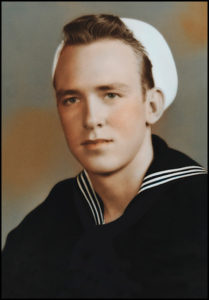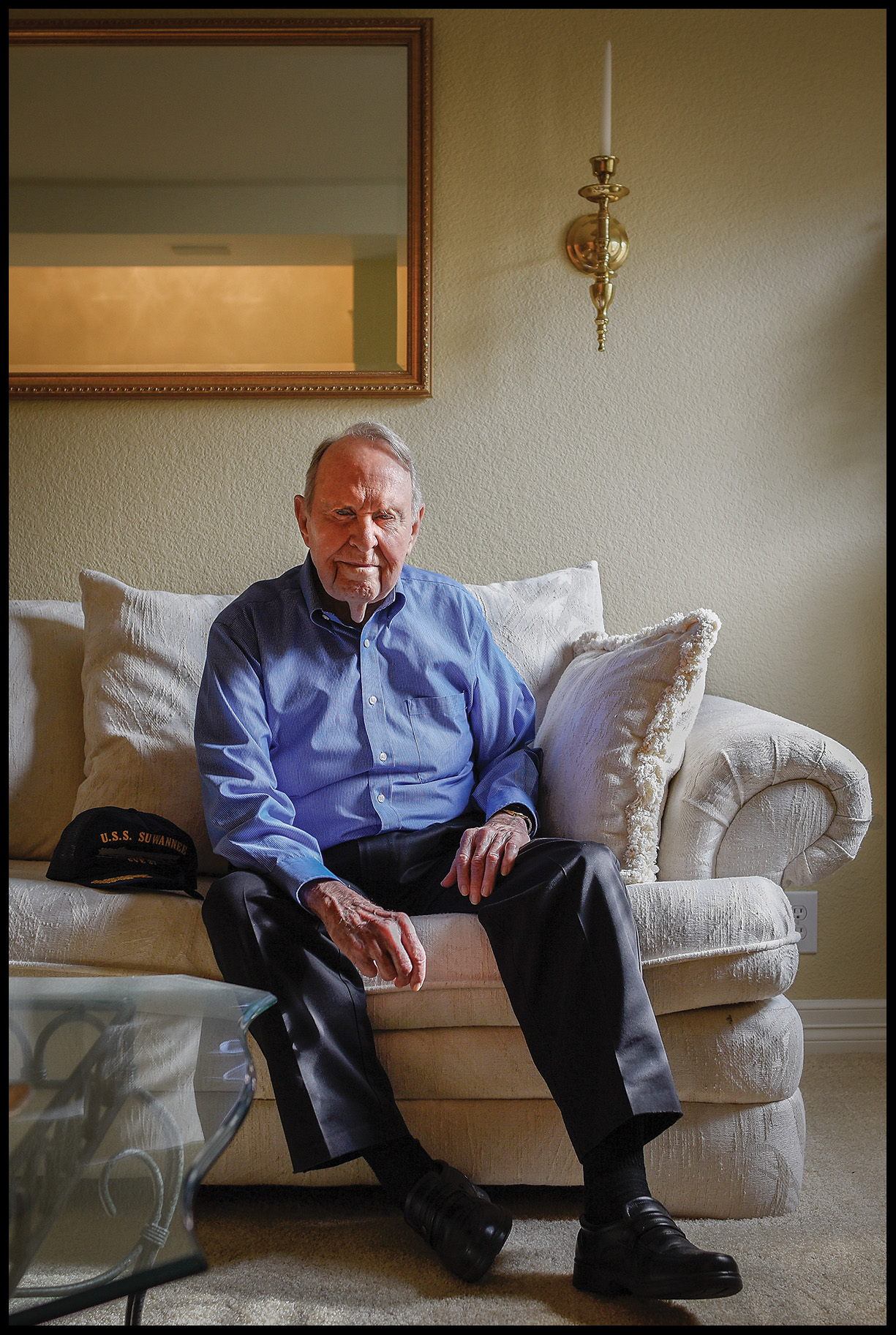Burkett Riggs
Parachute rigger in PTO
Burkett Riggs
Master Chief, U.S. Navy
1943-1946

Seaman Burkett Riggs
San Diego, CA, 1943
I have pictures where guys got out on the wing of the plane, pulled that 3-man life raft out and got in it as the plane sunk underneath them. They never even got their feet wet.
I was born in 1925 and grew up on a dairy farm 12 miles out of Somerset, Texas. We got up at 5:30 and milked cows before school. When I graduated from Somerset High in May of ’42, I went down to enlist in the Navy. They gave me papers for my parents to sign because I was only 17. They didn’t want to. I had a brother in Africa and they didn’t want to rush me off, so I waited until I was 18. I went in on March 23, 1943 and got out March 23, 1946 as a parachute rigger first class.
I went to boot camp in San Diego, then transferred to a Carrier Aircraft Service Unit (CASU) at the Naval Air Station North Island. I volunteered for rigger school after I saw it on the bulletin board. It said that participants must make a parachute jump before being rated. A lot of guys didn’t want to do that. To me that sounded pretty exciting. Parachute riggers were all volunteers.
They trained us to maintain large sewing machines to repair the harnesses made of thick webbing. We took care of the life rafts and the life jackets. I had to update the parachutes every two weeks, open, fluff and air them out. That silk would stick together in high humidity. I slept in the parachute loft, which was much better than the quarters below deck. It had cool air to keep those chutes dried out. We always had four or five chutes drying out, packing and rotating with what was in the planes. It was the best duty in the Navy.
I was more or less my own boss. My immediate officer was in supply and I just told him what I needed. I packed all the parachutes for the torpedo squadron. The fire squadron had a rigger and there were two in the ship’s company. It was a full-time job. We didn’t have much time to play poker. You had to be serious about it. I had more guys that had to use life rafts than parachutes. I have pictures where guys got out on the wing of the plane, pulled that 3-man life raft out and got in it as the plane sunk underneath them. They never even got their feet wet.
We left the States on February 1, 1945 and headed for the Pacific on the USS Suwannee. We went to Guadalcanal for more training, getting ready for the Okinawa landing on April 1st. We were in Okinawa for 86 days until the campaign ended. We were gearing up to make a landing on mainland Japan when the atomic bombs were dropped.
I was known as Riggs the Rigger. One of the guys who bailed out in one of my chutes brought me a bottle of scotch. I put it in the back of my locker for a special occasion. That special occasion came on September 15, 1945. I figured that was worth celebrating. My three close buddies and I were playing pinochle. We heard a loud explosion and the ship kind of trembled, so we hit the deck. The USS Pennsylvania was on fire a quarter of a mile from us. A Japanese plane had come in below the radar and put a torpedo in that battleship. We lost 27 men.
My best day in WWII was when we heard that the Japs surrendered. Next to that was the day I got in the Navy. My worst day was during the Okinawa campaign when a Jap sub was tracking us. We didn’t know when that torpedo might be released. Most of us stayed at battle stations all night. The next morning we found oil slicks from the destroyers’ depth charges.
After I was discharged, I came back to San Antonio and tried to find a job. I was 21 years old. I had only been milking cows before the war. I hired on with Southwestern Bell Telephone Company, now AT&T, as a lineman. I stayed with them for 40 years.
I helped organize the first Naval reserve unit in San Antonio and served for 40 years. I retired as a master chief, the highest enlisted rate in the Navy.
My wife Loyce and I have been married 71 years. {01-17-2017 • San Antonio, TX}
